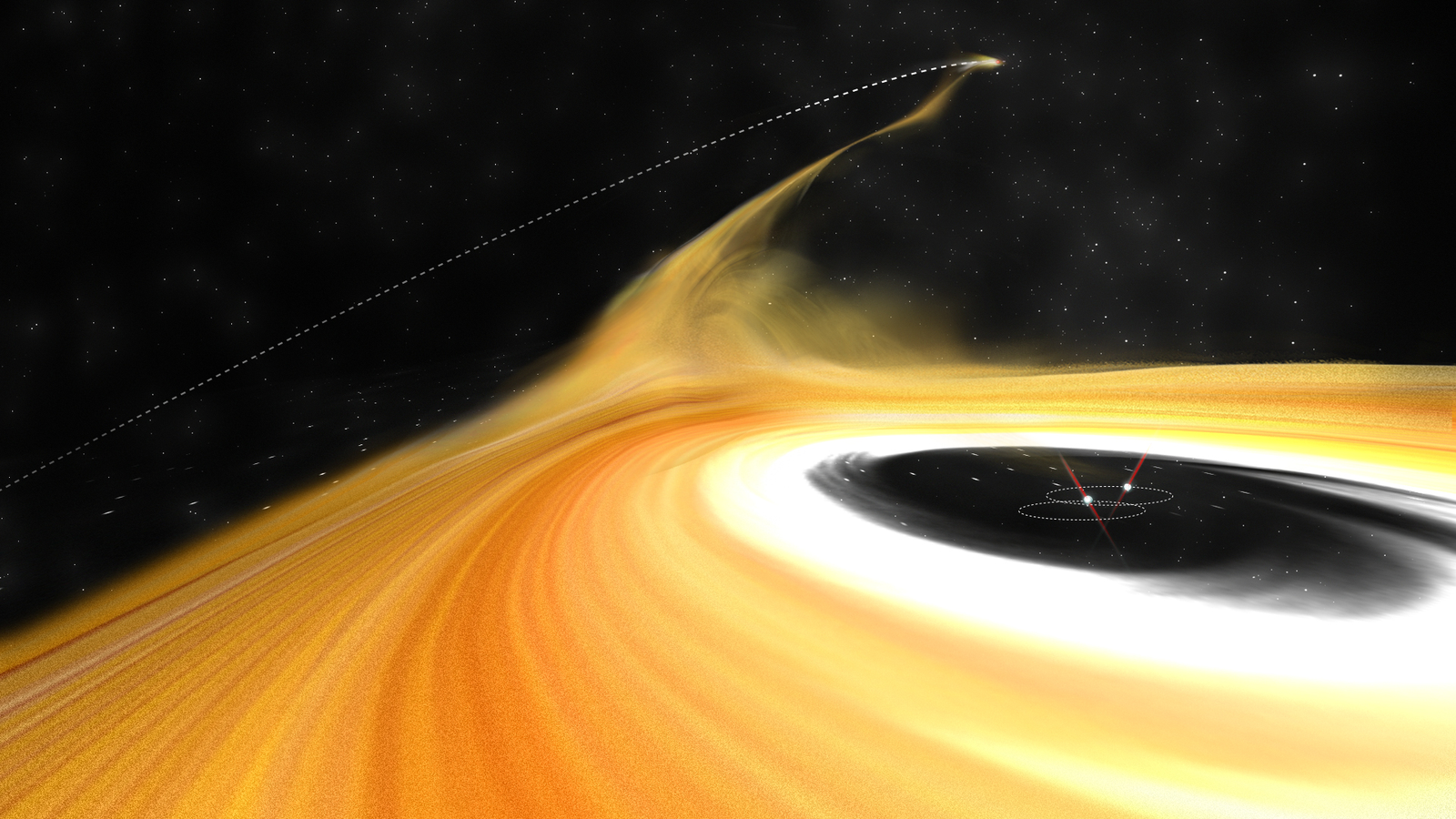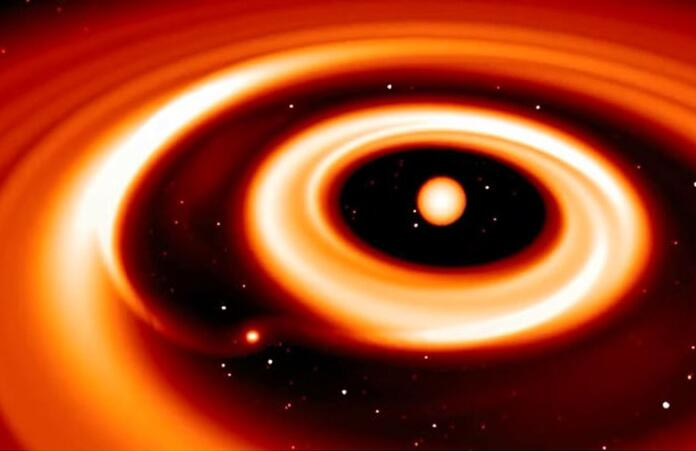The Solar System, a complex arrangement of planets, moons, and other celestial bodies, is a finely tuned mechanism. Yet, it wasn’t always this way. Some 4.6 billion years ago, a rogue star might have come perilously close to our young Sun, disrupting the delicate balance and altering the trajectories of objects within our Solar System. This ancient event could be the key to understanding the peculiar paths of certain distant celestial objects that have baffled scientists for years.
Beyond Neptune: Exploring the Kuiper Belt
Neptune, the last of the planets in our Solar System, guards the entrance to the Kuiper Belt, a region filled with icy bodies and dwarf planets like Pluto. This belt extends far beyond Neptune and is a repository of ancient objects that date back to the early days of our Solar System.

The Kuiper Belt isn’t just a collection of space debris; it’s a time capsule, preserving the history of our Solar System’s formation. Within this region are thousands of objects larger than 100 kilometers in diameter, known as Trans-Neptunian Objects (TNOs). The orbits of these objects are often eccentric and tilted, a characteristic that has puzzled astronomers for years.
The Stellar Flyby Hypothesis: A Possible Explanation
A team of scientists has proposed an intriguing theory to explain these unusual orbits: a star passed close to our Solar System billions of years ago. This stellar flyby, as it’s called, may have had a profound impact on the outer regions of our Solar System. The gravitational pull of this passing star could have nudged some objects into highly eccentric orbits and others into the inner Solar System, where they were captured by the giant planets as moons.
The research, led by Susanne Pfalzner from the Jülich Supercomputing Centre in Germany, suggests that this close encounter with a star slightly smaller than our Sun occurred at a distance of about 110 astronomical units (AU). To put that into perspective, 1 AU is the average distance between the Earth and the Sun. The team’s findings are based on over 3,000 supercomputer simulations, which revealed that such an encounter could account for many of the Solar System’s anomalies.
Simulations and Solar System’s Revelations
In their simulations, the researchers identified three types of TNOs: those in nearly circular orbits close to the Solar System’s plane, those in highly eccentric orbits, and those with steeply inclined orbits. The latter two groups, particularly, have been challenging to explain using traditional models of Solar System formation.

The simulations indicate that a stellar flyby could be responsible for these oddball orbits. The gravitational forces exerted by the passing star would have been strong enough to alter the paths of objects in the outer Solar System, pushing some into eccentric and inclined orbits. Sedna, a distant object discovered in 2003, exemplifies this idea. Its elongated orbit takes it nearly 12,000 years to complete one trip around the Sun, and its current trajectory could be the result of such a stellar interaction.
Irregular Moons: The Unlikely Captives
The flyby’s influence might not have been confined to the Kuiper Belt alone. The researchers also suggest that some of the Solar System’s irregular moons—those that follow highly unusual orbits around their parent planets—might have been captured during this stellar encounter.
Unlike regular moons, which formed alongside their planets and follow circular orbits, irregular moons have orbits that are elliptical, inclined, and often retrograde. Saturn’s moon Phoebe and Neptune’s moon Triton are prime examples. These moons are likely captured objects, their odd trajectories suggesting they were once free-floating TNOs that were drawn in by the giant planets’ gravity during the stellar flyby.
Implications for Other Planetary Systems
While it may seem that such a stellar encounter is rare, recent observations suggest that close encounters between stars are more common than previously thought. The ALMA observatory in Chile has provided evidence that such flybys could happen relatively frequently in the galaxy.

If these encounters are indeed common, they could play a significant role in shaping planetary systems across the galaxy. The gravitational disturbances caused by such flybys could lead to a variety of planetary configurations, influencing the formation and evolution of planetary systems far beyond our own.
Searching for More Evidence
Although the simulations provide a strong case for the flyby hypothesis, more evidence is needed to confirm this theory. Future observations, particularly with more advanced telescopes like the James Webb Space Telescope, could reveal similar events in other star systems or provide more detailed data on distant objects within our Solar System.
Additionally, exploring the possibility that such an encounter could have influenced the development of life on Earth adds another layer of interest. If a passing star sent objects from the Kuiper Belt crashing into the inner Solar System, it’s possible that these objects could have delivered organic compounds necessary for life to our planet.
Challenges and Future Directions
Despite the compelling nature of this hypothesis, studying stellar flybys is challenging. The vast range of possible parameters for these events makes predictions difficult. Furthermore, gathering evidence for such encounters, particularly from ancient events, is no easy task.

However, advancements in technology and continued observations give scientists hope that they will eventually uncover more details about the Solar System’s formation. The flyby hypothesis is one piece of a larger puzzle, but it offers a fascinating explanation for some of the most mysterious features of our Solar System.
Conclusion
The possibility that a wandering star once passed close to our Solar System, leaving a lasting impact on its structure, is a captivating idea. It challenges our understanding of the forces that have shaped our cosmic home and opens up new avenues for exploration. As we continue to study the universe, we may find that such encounters are more common than we thought, playing a crucial role in the evolution of planetary systems across the galaxy.








